We’ve all heard of Trojan horses; those legendary horses used to sneak into enemy citadels undetected during the mythical sieges of long ago. While those Trojan horses were of a physical nature, today’s “Trojans” are very much of a digital nature — and they’re incredibly slippery. Imagine someone controlling your mobile or pc from somewhere… scary, right? and that’s what exactly is Remote Access Trojan (RAT).
In this blog post, we’re going to explore everything about RAT. So, read on to discover the type of threat RATs pose, the kind of damage they can do, and the best ways to protect your devices from them, so you can make sure your digital assets don’t get hijacked.
Quick Summary of Key Question
Remote Access Trojans (RATs) are malicious software that gives intruders remote access to a computer or network. They can be used by hackers to monitor victims, steal information, and carry out other criminal activities. To protect against these attacks, it is important to understand how they work and how they are used by attackers to gain unauthorized access.
Table of Contents
What is a Remote Access Trojan?
A Remote Access Trojan (RAT) is malicious software that enables an attacker to take control of a computer or network from a remote location. It facilitates the transfer of data and commands from the attacker’s location to the compromised device.
RATs can be spread in a variety of ways, such as through malicious files or links sent via email, downloading compromised software from the internet, or even other infected computers in a local network.
Once installed on a target device, The RAT provides the attacker with complete control over it, making him able to view, copy, delete, and modify files and execute any process on the system as if they were sitting right in front of it. The attacker uses RATs to collect sensitive information, seize control of web cameras and microphones to monitor victims, steal login credentials and bank information, manipulate files stored on disk, deploy additional malware payloads, and even use your machine as part of a botnet for various malicious activities.
On one hand, some people argue that RATs are prevalent in corporate networks as they can be used to administer changes remotely as well as troubleshoot problems more quickly. On the other hand, security experts debate that such malicious software can easily be used by hackers for criminal activities if not monitored closely.
The mechanism behind the RAT attack:
Firstly, the attacker needs a RAT. He will use tools like Metasploit to create one or buy some pre-made/ready-made RATs. Once he is done with creating, then he will move forward to the next step which is, configuring.
The attacker has to configure the RAT to send the data from the victim’s computer to a specific IP and on a specific Port. Of course, he wants the data to be sent to his computer so he will configure the RAT with his machine’s IP and a desired port number.
After the configuration process, the attacker will send the RAT to his victim. He will deploy various strategies and tactics to send the RAT, which we will see in the following sections.
Finally, the attacker will open up the listener and listen for any incoming connections on the configured port. when the victim opens the RAT, the attacker will get an incoming connection. That’s it, now the attacker can do whatever he wants with the compromised device.
To proactively protect against the threat of RATs, it is important to understand how hackers utilize them to gain access to vulnerable devices and networks. In the following section, we will explore this further by looking at how attackers use RATs to gain unauthorized access.
How do Hackers Utilize RATs?
Remote Access Trojans (RATs) can be extremely difficult to detect and protect against, as the malicious software is designed to masquerade as legitimate operations. They are often used by intruders to gain access to a victim’s device, which enables them to remotely control the victim’s computer, view files, and even access sensitive data.
Hackers will utilize a variety of techniques in order to gain access to a device using a RAT. The most common technique involves sending a malicious link, attachment, or program to email users. When recipients open these links or attachments, the malicious code activates, installs the RAT software without the user’s knowledge, and then opens up a backdoor allowing unauthorized remote access. Intruders will also take advantage of unsecured networks and unprotected devices that are already connected to the Internet. Once access has been granted, the intruder can disable existing security features and allow other malicious programs such as key loggers and viruses to gain access to the victim’s device.
Alternatively, some intruders take advantage of personal relationships and send victims an apparently harmless link or attachment that has been disguised as coming from someone they know. While this tactic is more time-consuming than other methods, it can still be extremely effective if unsuspecting users download potentially malicious links or attachments unknowingly.
It’s important for device owners to remember that no matter how sophisticated a RAT infection may appear on the surface, intruders use similar tactics in order to gain remote access over vulnerable devices. Moving forward with caution when opening emails or clicking on seemingly harmless links is one of the best ways to protect yourself from RAT infections.
The dangers of RATs can vary greatly depending on each individual case; however, it is important for device owners to understand that any unauthorized access can result in severe consequences. In the next section, we’ll discuss some of these potential risks further.
The Dangers of RATs
Remote Access Trojans (RATs) are one of the most dangerous threats facing connected devices and PCs today. When malicious hackers employ RATs, they can gain access to a device remotely, with the ability to steal and modify sensitive personal information and remotely control the device. This makes those who use the internet highly vulnerable to such attacks.
The extent of damage that can be caused by RATs is more severe than most other forms of cyber-attacks. They can access virtually everything on a computer, including usernames, passwords, records of online activity, and even confidential documents. As RATs are remote controlled, they also have the capability to install additional malicious software onto a computer without any prior warning or detection. Such a degree of infiltration leaves users no time to react before their data has been exposed to damage.
However, since RATs require user interaction in order to be enabled, giving users an opportunity to take preventive measures. If used correctly and safeguarded properly, accessing devices with these trojans is not as extensive as it appears at first glance.
It is therefore essential for individuals and organizations alike to be fully aware of the dangers of RATs and equip themselves with proper prevention tools and strategies in order to reduce their risk for attack. With this awareness will come an understanding that although RATs represent a major security threat, the risks associated with them can be minimized through appropriate protection measures.
This leads us to our next section – what can hackers steal or modify with RATs? The answers may surprise you – but not if you know what you’re looking out for. Stay tuned as we explore this issue in depth!
What Can hackers Steal or Modify With RATs?
Remote Access Trojans (RATs) are a particularly dangerous form of malware because they are capable of stealing and modifying sensitive data on our devices. These malicious software programs can potentially take control of the entire operating system, giving hackers access to personal information such as passwords, viewing files, and even using webcams and microphones. Furthermore, these cyber-criminals are able to use RATs to delete or modify important data stored on the device, wiping out valuable files with only a few clicks.
The chances of being affected by a RAT attack can be frighteningly high if network passwords and firewalls are not properly secured. However, it is often difficult for individuals to recognize that their personal device was infected with a RAT; therefore it is important to understand the potential risks associated with this type of malware.
In addition to stealing precious data and making damaging modifications, there have been reports of hackers attempting to gain control of people’s finances through RATs. In some cases, they might wire money from one account directly into another; in others, they might methodically transfer funds until only a minimal amount remains. As a result, it is best for individuals to remain vigilant about their online security and take proactive steps to protect their devices from malicious software such as RATs.
Fortunately, there are steps that can be taken to reduce the risk of becoming the victim of an attack. By taking proactive measures to secure networks and strengthen firewalls, users can help deter potential threats before they arise. These precautions will go far in protecting both people’s digital lives and financial assets in the event of a RAT attack. Now that you understand more about what hackers can do with Remote Access Trojans, let’s explore how you can protect your networks from them moving forward.
Protecting Your Networks From RATs
In this digital age, protecting yourself and your networks from Remote Access Trojans (RATs) is a must. RATs are malicious programs that allow unauthorized access to a system or network remotely. This can lead to data breaches and other serious security incidents, which makes it incredibly important to take the necessary precautions against RATs.
Some of the most effective measures for protecting networks from RATs include firewalls, antivirus programs, patch management systems, and the limitation of system privileges. Firewalls are designed to detect and screen incoming requests from suspicious sources before allowing them access to the internal network. Running updated antivirus programs can help identify and remove malicious files from the system. Patch management systems keep all software up-to-date, so all security patches can be applied when needed, making it much harder for hackers to exploit vulnerabilities. Lastly, applying limited permissions on system users will prevent confidential data from falling into the wrong hands.
Of course, a debate rages on whether these measures are enough to protect networks against RATs. While they may provide a certain level of defense, the reality is that hackers can still find ways around these protections, particularly if they have significant skill and resources at their disposal. Therefore, while security measures are essential for protecting networks against such threats, constant vigilance is also required to ensure any attempts at infiltration are detected and remedied as quickly as possible.
To this end, the next section of this article will focus on detecting RATs on your system in order to mitigate their potential damage and threats.
Detecting RATs on Your System
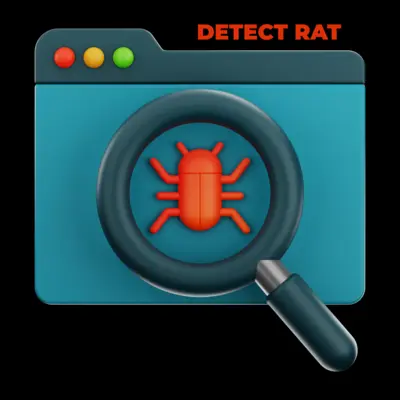
Detecting Remote Access Trojans (RATs) on your system can be tricky, but not impossible. One of the best ways to detect a RAT is by monitoring your network’s activity and checking for any suspicious activity, such as an unknown process running in the background or specific ports opening up when they shouldn’t be. A great way to monitor your network’s activity is by using an intrusion detection system (IDS). An IDS evaluates your incoming and outgoing traffic and sends out an alert if it detects malicious behavior. It will also check for any changes to active processes on your computer that it would mark as suspicious.
Depending on the sophistication of the attacker, there are a variety of other methods you can use to detect RATs on your computer. Another option is scanning for malware with an anti-virus program. You may occasionally need to run scans manually instead of waiting for regularly scheduled scans, depending on how long before the RAT has been installed or if any new features have been added. Of course, while these types of scans can find many malicious programs, they cannot guarantee that all malicious software has been removed and detected.
Using methods such as logging keystrokes and capturing screenshots can also help reveal RAT activity, although this may also depend on the capabilities of your security measures in place, like an endpoint protection system or firewall.
Finally, keeping an eye out for discrepancies between what ends up in a user’s data files and what their antivirus solution reports are can be a good sign that something malicious is lurking in the shadows. Monitor services like Task Manager or Sysinternals Process Explorer to discover issues such as unusually high CPU utilization or large amounts of disk I/O which could signal the presence of a RAT on your computer.
Ultimately, there is no single “perfect” way to detect every type of RAT, so organizations should choose a variety of security methods that complement one another in order to create the most comprehensive defense against threats like remote access Trojans. With this in mind, now it’s time to explore the consequences of having a RAT on your system.
Consequences of Having a RAT on Your System
A Remote Access Trojan (RAT) is a type of malware designed to gain access and control of a user’s computer, allowing the attacker to spy, delete data, launch attacks, and even erase all the information stored on the system. Unfortunately, many users do not realize the dangers associated with having a RAT on their system until it is too late.
Unlimited Access
The primary consequence of having a RAT on your computer is that your system is no longer under your control. An attacker can have unlimited access to data stored in the computer including files, emails, and sensitive personal information. This means that any activity you perform can be monitored without your knowledge or consent. Furthermore, attackers may be able to utilize this access to spread malicious software such as keyloggers, ransomware, or viruses.
Identity Theft
Having a RAT on your system could result in identity theft if personal details are accessed by an attacker. These details may include bank information, Social Security numbers, passwords, or other identifying information that can be used for financial gain or used for further malicious activities.
Data Loss
Another major consequence of having a RAT on your system is that data stored in the computer may be irrevocably lost. Attackers may delete important documents and personal files or encrypt files to make them unreadable. In some cases, they may even use encryption tools such as CryptoLocker or WannaCry to render disk drives inaccessible until payment is made.
Privacy Violation
Data stolen by attackers through their remote access may also be used against you by threatening blackmail or spreading embarrassing material online—a serious privacy violation in its own right. To make matters worse, some attackers have been known to use surveillance methods such as webcams and microphones to secretly monitor targets’ activities at home or work.
Answers to Frequently Asked Questions with Explanations
How do remote access trojans spread?
RATs can be spread in a variety of ways, such as through malicious files or links sent via email, downloading compromised software from the internet, or even other infected computers in a local network.
How can I protect my computer from a remote access trojan?
There are several steps you can take to protect your computer from a remote access trojan.
First and foremost, make sure your operating system is up-to-date and adequately protected with the latest security software. This will help prevent malicious programs from entering your system and running undetected. Install anti-malware software and make sure it’s regularly updated. This will detect any existing threats on your system, including trojans, allowing you to tackle them quickly and effectively. Additionally, be wary of any suspicious emails or links that look like they could contain a trojan. If in doubt, don’t open them!
Additionally, if possible don’t ever click on links sent via emails or social media messages from unknown sources as these could potentially contain malicious programs that attempt to gain remote access to your computer.
Finally, consider using two-factor authentication whenever possible – this adds an extra layer of security to any online account, making it more difficult for cyber-criminals to gain unauthorized access.
By following these basic measures, you can significantly reduce the risk of falling victim to a remote access trojan attack.


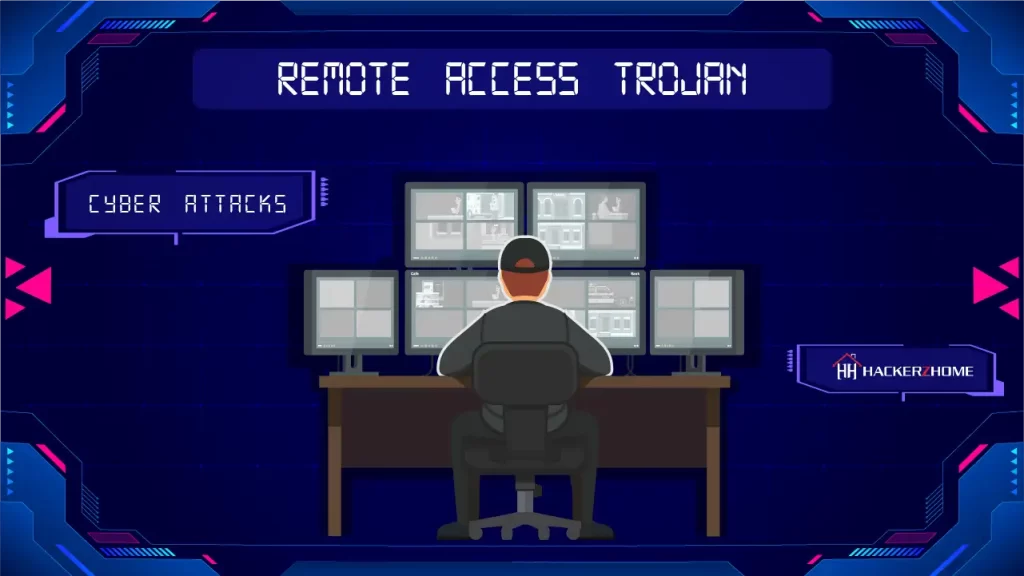
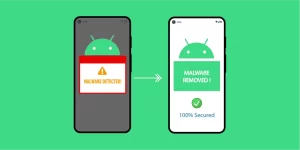
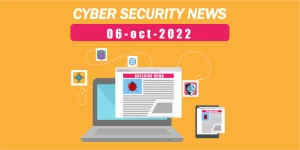





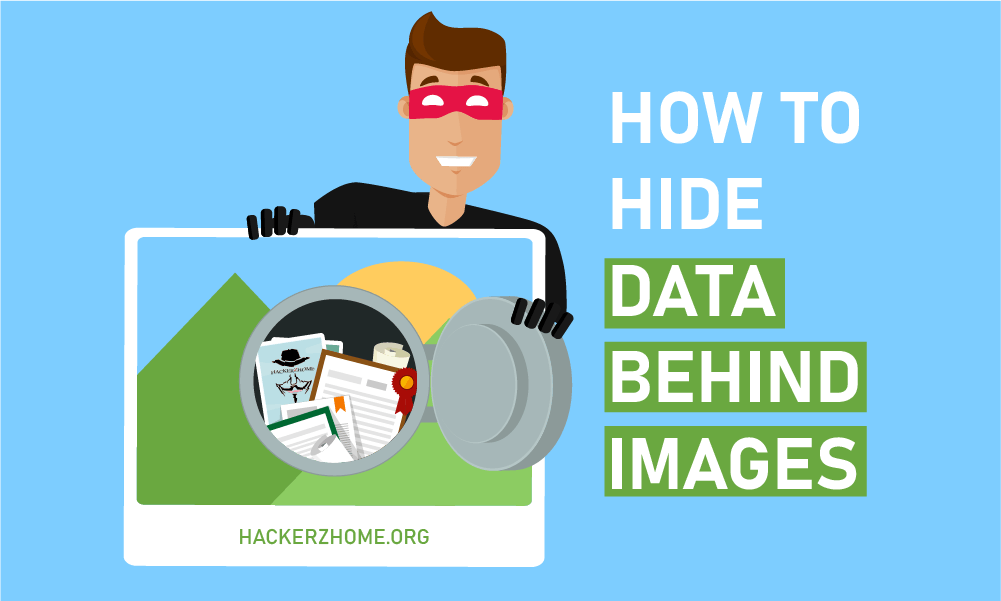

6 Responses
Such a nice information about rats ?
Thank you!
how to make RAT? (only for knowledge)
will post a tutorial
how to remove a rat from are device?
Firstly, Try to detect it using anti-virus software. Once found, then uninstall it manually or let the anti-virus software do that job.